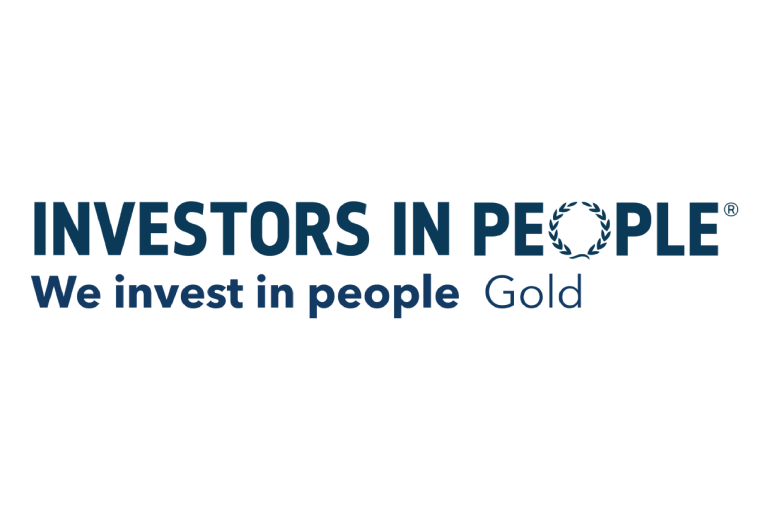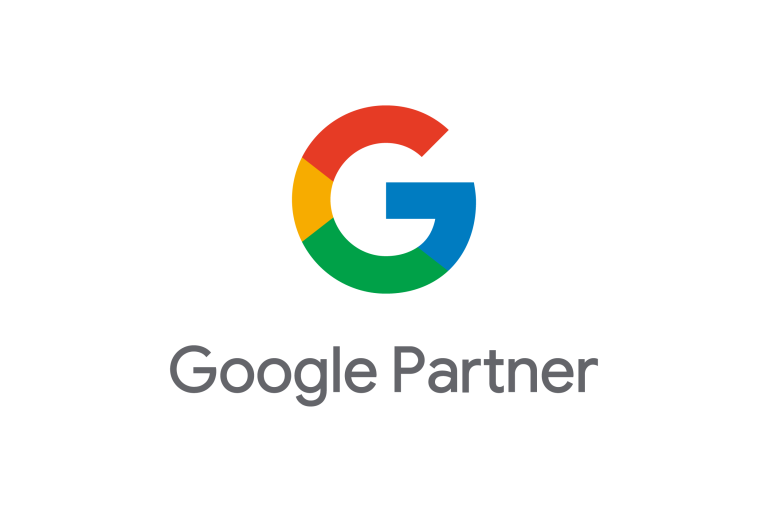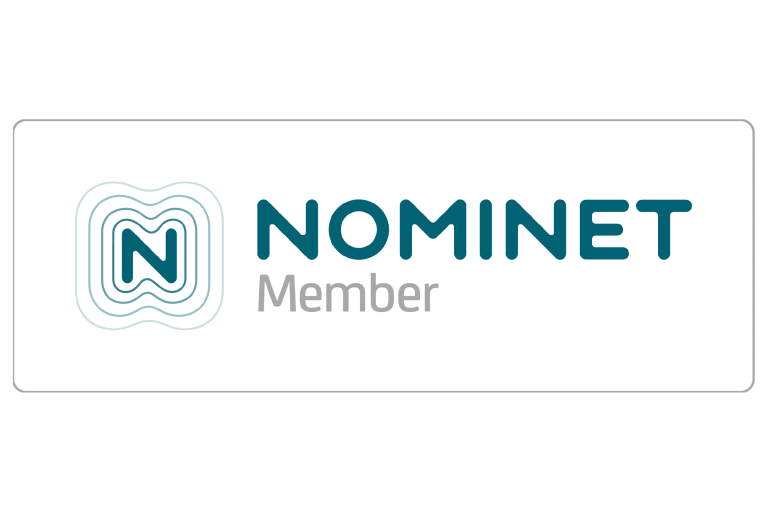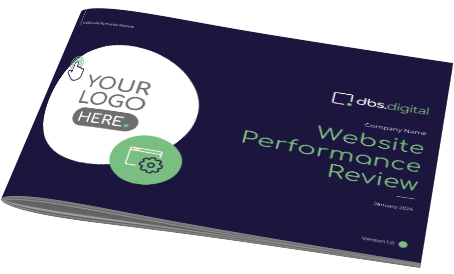To explain what digital marketing is and why businesses need it, we’ll explore the key elements that make up digital marketing in detail. We’ll look at the importance of websites to analysing marketing data and discuss how these components can work together to build a strong online presence.
marketing in the digital era
We live in a unique era, where we navigate two distinct worlds: the physical, where all our senses operate, and the digital, where we engage with the internet through computers, tablets, tv’s, mobile phones and other smart devices.
Digital marketing has become a vital component of modern business success, enabling companies to connect with customers online. Arguably, digital marketing has made starting a business more accessible than ever before because the internet makes it easier to engage with people. However, it’s still not easy to win business so businesses need to get the technical aspects spot on while using tried and tested marketing psychology to succeed.
As consumers turn to the internet for information, services and online shopping, getting digital marketing right is essential for businesses aiming to grow and thrive. But what is digital marketing exactly? In short, digital marketing is a method of reaching people using the internet. It refers to any form of marketing that takes place through digital platforms, including:
- Websites
- Search Engines
- Social Media
- and more.
digital strategies
Successful digital marketing strategies are tailored to your objectives and your audience’s behaviour. Getting the right mix of online channels such as SEO, paid advertising, social media, email, and content marketing to reach your target audiences and drive engagement is what leads to a growing customer base. Audiences are typically divided into two categories: known and unknown and both are critical to a well-rounded digital strategy.
Known audiences are people who have already engaged with your brand, such as visiting your website, making purchases, subscribing to emails, or interacting on social media. These people will be more receptive to personalised messaging and strategies like email marketing and social media are effective for nurturing these audiences.
The unknown audience, on the other hand, are people who have not yet engaged with your brand and are therefore harder to convert. They are unfamiliar with what you offer but can be attracted through methods like paid advertising, social media outreach, or SEO. Once you’ve captured their attention, the next step is to build trust, guiding them through the marketing funnel until they convert and become part of your known audience.
websites: the digital foundation
In the physical world, businesses typically have a presence like a high street shop, office, restaurant, pub, or industrial unit where customers can visit. A website acts as the online equivalent, serving as digital hub where customers can engage with your brand and at DBS Digital, this is something we prioritise.
a brief history of websites
Websites began in the early 1990s with the launch of the first site by Tim Berners-Lee, known as the inventor of the World Wide Web. The first website was a simple platform for sharing information about the World Wide Web. Initially text-based and lacking interactivity, websites evolved in the late 1990s with the development of HTML and CSS, leading to more appealing and user-friendly designs.
By the early 2000s, websites included rich media and dynamic functionalities, paving the way for e-commerce and social media. As businesses recognised the importance of an online presence, websites became essential tools for showcasing services and engaging users. Today, advancements in technology have further transformed websites into critical platforms for customer engagement and brand representation.
websites and digital marketing
Your website is often the first interaction users have with your brand, making its appearance and functionality critical. It’s more than just an online brochure; it’s a platform to showcase your brand identity, establish credibility, and guide users toward engaging with your business.
There are various types of websites, each serving a different purpose, such as forums or social media platforms. Some of the commonly used websites include:
- Service Websites – These, like our site, allow businesses to promote their services.
- SaaS Websites – Designed to market Software as a Service, offering access to software solutions online.
- E-commerce Websites – Online stores that sell products directly to consumers.
- Portfolio Websites – Ideal for artists, photographers, or designers to showcase and promote their work.
- Blog Websites – Often integrated with main websites or hosted on subdomains to share content regularly.
- Non-profit/Charity Websites – Similar to service or e-commerce sites but designed for charitable organisations.
- Membership Websites – These offer gated content that requires a subscription or payment to access.
A carefully considered website design that is effectively branded, user-friendly, mobile-responsive, and fast-loading is essential in today’s digital landscape. While marketing brings visitors to your site, the website itself is essential for turning those visitors into customers. It should be designed to effectively convert both your known and unknown audiences. If you’re wondering “what is website design” or “what is user experience?”, the team at DBS Digital are here to help.
seo: building long-term visibility
SEO, or to use its full name, Search Engine Optimisation, is the process of ranking a website on search engine results pages (SERPs) for relevant search terms. But before we get into the technical side, let’s look at why search engines exist in the first place because this explains why it’s important.
Search engines are digital tools that index and catalogue the web, making it easy to find information, products, services, software, and virtually anything else you need. However, before search engines, people relied on online directories, which functioned like digital phone books, referral links from other websites, word of mouth, and other methods to discover websites – making the web far less accessible than it is today.
This digital marketing strategy primarily targets your unknown audience, but it’s important to note that people may also use search engines to find your website by directly searching for your brand name, like “DBS Digital“
a brief history of seo
In 1993, The Wanderer was launched with a web crawler designed to index and measure the size of the World Wide Web. While not a true search engine, it shared similarities and helped pave the way for early search engines like AltaVista. Yahoo! further advanced the field, eventually leading to the development of more sophisticated search engines such as Google and Bing. These platforms transformed web accessibility, making it useful to the masses and they’re free for the consumer to use. The ability to search the internet and find what you need makes search engines an incredibly powerful tool for people. Google has been the most popular search engine for a long time because they provide the highest quality and most relevant results – this keeps users coming back in droves.
As of 2023, Google processes 150 million searches per day in the UK and 8.5 billion searches worldwide. Bing, the second most popular search engine, handles 18 million searches per day in the UK and 900 million worldwide. As you can imagine, ranking at the top of their search results can drive significant traffic to a website and generate new business, as show below in the click distribution of organic search results on Google:
- 1st position: 28-35% of clicks
- 2nd position: 15-17% of clicks
- 3rd position: 10-12% of clicks
- 4th position: 7-8% of clicks
- 5th position: 5-6% of clicks
Beyond the 6th position, click rates drop further, with pages on the second search results page typically receiving less than 2-3% of clicks.
where seo fits in with digital marketing
The popularity of search engines makes them a crucial element of any digital marketing strategy. However, it’s often overlooked by web developers without SEO expertise or by businesses that cut corners and fail to invest in it. From a marketing perspective, SEO forms the framework of a website, while design provides the curb appeal. At DBS Digital, we always prioritise SEO when developing a new website or working on a digital marketing strategy for an existing one.
Investing in SEO offers long-term benefits by improving your website’s visibility for relevant searches. Once established, businesses can attract significant traffic from users actively seeking what you offer. To achieve this, your website’s content and structure must be properly optimised, and you need to address Google’s other ranking factors to outperform your competition.
We’re often asked “What is SEO and how does it work?” and it’s a challenging question to ask because there’s a lot to consider including including keyword research, on-page optimisation, technical SEO, and link-building. SEO requires continuous effort, but when done correctly, it can generate a healthy flow of traffic to your website. It is one of the most cost-effective methods of building long-term online visibility and is foundational to any digital marketing strategy.
paid advertising: instant visibility
While SEO builds visibility over time, paid advertising allows businesses to gain immediate exposure, which can generate quicker results. But what exactly is PPC?
Paid advertising or Pay-Per-Click (PPC) advertising places your advert directly in front of the audience or search results you choose. Platforms like Google Ads, Facebook, and Instagram offer highly effective paid advertising options, enabling you to target your audience based on search terms, interests, demographics, and online behaviours.
a brief history of paid advertising
Believe it or not, online paid advertising has been around since the mid-1990s, with Google AdWords, as it was known then, launching in 2000. Paid social media advertising became available in 2005 on platforms like LinkedIn and Facebook. These platforms introduced advertising to monetise their services, much like how TV networks use adverts to fund their programming. With millions of active and engaged users, online advertising quickly became one of the most successful ways to reach consumers.
the benefits of paid advertising in digital marketing
One of the key advantages of paid advertising is its precision. You have full control over who sees your adverts, ensuring they reach the right audience at the right time. With Google Ads, you can target users based on specific keywords, allowing you to connect with potential customers when their intent to purchase is highest. On social media, platforms provide valuable data, such as age, gender, location, and interests, enabling you to create a tailored audience that closely matches your target market.
Additionally, paid advertising offers real-time performance data, allowing you to track all conversions and sales with pinpoint accuracy. This is crucial for optimising campaigns and understanding what works. Businesses can calculate their return on ad spend (ROAS), helping them evaluate the effectiveness of their investment and adjust their strategies for maximum profitability.
It’s important to note that while paid advertising requires consistent financial investment, its ability to drive rapid business growth and generate quick results makes it an invaluable marketing tool – provided campaigns are well-optimised and profitable. With the right approach, businesses can scale their efforts, boost their brand visibility, and reach new customers more effectively than ever before.
Another benefit of PPC is its flexibility. Whether you’re looking to increase brand awareness, drive traffic to a specific page, or promote a special offer, paid advertising can be tailored to meet a wide range of business goals. It allows businesses to experiment with different ad formats, such as search ads, display ads, video ads, or carousel ads on social media, giving them the ability to adapt their approach depending on what resonates best with their target audience.
In summary, while SEO is a long-term strategy that builds sustainable growth, PPC is an essential tool for businesses looking to achieve immediate results and create measurable impact in a highly competitive digital landscape.
content marketing: telling your story
Content marketing focuses on creating valuable, relevant content that connects with your target audience. By delivering content that addresses customer needs and answers their questions, you can establish your business as a thought leader and build trust with potential customers. To truly understand “what is content marketing?” it’s important to explore how this strategy has evolved over time.
a brief history of content marketing
You might be surprised to learn that content marketing has been around for centuries. As far back as the 1700s and 1800s, businesses like John Deere used publications to subtly promote their services. In the early 1900s, Michelin launched the famous Michelin Guide, offering travel tips, restaurant reviews, and car maintenance advice. While the content was valuable to readers, it also encouraged them to drive more, ultimately increasing demand for Michelin tyres.
Fast-forward to the 2000s, and content marketing has become a cornerstone of digital marketing. The rise of social media platforms like Facebook (2004), YouTube (2005), and Twitter (2006) revolutionised how brands share content and engage directly with audiences. By 2008, content marketing evolved further as businesses began integrating SEO strategies, creating blogs and articles that would rank on Google and drive organic traffic.
In the 2010s, content marketing truly boomed, with the establishment of the Content Marketing Institute in 2010 and the rise of inbound marketing, popularised by companies like HubSpot. By 2015, video content on platforms like YouTube, Instagram, and TikTok became central to many brands’ strategies, driving engagement through viral, entertaining content. Today, content marketing continues to expand, with businesses investing in interactive content, personalised experiences powered by AI, and omnichannel strategies that reach consumers across multiple platforms.
how to use content marketing in a digital strategy
From blog posts and videos to infographics and eBooks, content marketing gives businesses a way to engage their audience in a non-promotional manner. It also complements other forms of digital marketing like SEO, as high-quality content can improve your search engine rankings. Good content marketing keeps your brand top of mind for your audience, fosters loyalty, and guides users along their buying journey.
To enhance your content marketing strategy, it’s important to focus on the variety of content types. From blog posts and videos to podcasts, webinars, and infographics, each format serves a different purpose and can appeal to different segments of your audience. Visual content like infographics can simplify complex information, while videos can offer dynamic storytelling that captures attention quickly. By diversifying your content types, you can ensure that your message reaches a broader audience and resonates with their preferred method of consumption.
Measuring effectiveness is crucial in content marketing. Analytics tools help track engagement metrics like time on page, social shares, and conversion rates, allowing you to refine your strategy. By monitoring performance, you can identify what resonates with your audience and optimise your content for maximum impact, ensuring it aligns with both audience needs and business goals.
We partner with clients to create impactful content marketing strategies that engage audiences. By working with DBS Digital, we’ll help you craft high-quality, diverse content that’s optimised for search and social reach.
social media: building connections
Social media platforms such as Facebook, Instagram, LinkedIn, and Twitter provide businesses with unique opportunities to engage directly with their target audience. Social media marketing involves creating and sharing content tailored to each platform’s audience and features.
a brief history of social media
Social media began in the early 2000s with platforms like Friendster and MySpace, which paved the way for later sites. The launch of Facebook in 2004 transformed social networking, allowing users to create detailed profiles and share updates. This set the stage for highly interactive platforms.
As social media evolved, Twitter and Instagram introduced unique features, such as real-time updates and visual storytelling. Businesses soon recognised the marketing potential of these platforms, leading to the rise of social media marketing as a key strategy. Today, social media is essential for digital marketing, offering businesses effective tools to connect and engage with their audience.
social media connects brands to unknown audiences
By leveraging social media, you can connect with your unknown audience, humanise your brand, foster community, and engage in two-way conversations with customers. It’s a powerful tool for increasing brand awareness, promoting products, and gathering real-time feedback from your audience. Effective social media marketing requires consistency, creativity, and a clear strategy tailored to the platform you’re using. Some of the most popular social media platforms are listed below, along with reasons for using the platform.
- Who uses Facebook?
Facebook has a diverse user demographic, appealing primarily to adults aged 25 to 54, with a notable presence among older users. - Why use Facebook?
Businesses use Facebook for its vast reach and ability to target specific audiences through detailed advertising options. The platform’s features making it ideal for brand awareness and customer loyalty.
YouTube
- Who uses YouTube?
YouTube attracts a wide range of users, particularly younger audiences aged 18 to 34, though it has significant viewership across all age groups.
- Why use YouTube?
YouTube allows businesses to leverage storytelling through short and long form video content. The platform’s search functionality also acts as an additional search engine.
- Who uses Instagram?
Instagram is popular among younger users, especially those aged 18 to 34, making it a great platform for brands targeting millennials and Gen Z.
- Why use Instagram?
Its visual focus allows businesses to create a lifestyle around their brand through engaging imagery and videos. Instagram’s features provide opportunities for authentic customer engagement.
- Who uses WhatsApp?
WhatsApp has a global user base that spans various demographics, with a strong presence among young adults and working professionals.
- Why use WhatsApp?
Businesses use WhatsApp for direct communication, customer support and even lead generation. Its real-time messaging is particularly effective for fostering customer relationships and providing timely updates or promotions.
TikTok
- Who uses TikTok?
TikTok primarily attracts Gen Z users, with a growing audience of younger millennials. Its short-form video format encourages creativity and viral trends, making it an exciting platform for brands to engage in innovative marketing.
- Why use TikTok?
Businesses use TikTok to reach younger consumers, boost brand awareness, and create relatable content that resonates with this demographic.
X (formerly Twitter)
- Who uses X?
X has a diverse user base but is particularly popular among younger adults and professionals. The platform’s focus on real-time updates makes it ideal for trending conversations and sharing news quickly.
- Why use X?
Businesses use X to enhance brand visibility, participate in customer dialogue, and address feedback promptly, making it a valuable tool for building relationships and driving engagement.
At DBS Digital, we work closely with our clients to identify the most impactful social channels for their brand, helping to tailor strategies that resonate with target audiences on each platform. We bring a full suite of social media advertising and social media management services to the table, ensuring your brand reaches the right people in the right places. By working together, we can build a social media presence that not only connects but also builds lasting relationships with your audience.
email marketing: direct and personal
Email marketing remains one of the most effective ways to engage with existing and potential customers. Through targeted email campaigns, businesses can deliver personalised content, offers, and updates directly to an audience that has already shown interest in their brand.
a brief history of email marketing
To better understand “what is email marketing” it’s benefical to start with a bit of history. Email as we know it now, wasn’t publicly available until the early 1990s. However, Gary Thuerk, the marketing manager for the now defunct Digital Equipment Corporation, sent out a mass e-mail over ARPANET (a precursor to the Internet) promoting the firm’s products in 1978. Although this generated business and proved that email marketing could be effective, this is widely considered the origin of spam email.
Unfortunately, we can’t talk about email marketing without talking about spam as it’s development over the years has been punctuated by legislation, laws and data protection regulations. While this has made email marketing more difficult to navigate for business, it’s improved the inboxes for users and we’re sure more will be done in the future to stamp it out.
email marketing connects brands to known audiences
Unlike other digital marketing channels, where you are often targeting new or unknown prospects, email marketing allows you to reach people who have already engaged with your business in some way. They’re already familiar with your brand, which makes them more likely to engage with the content you send.
By leveraging this connection, email marketing allows businesses to deliver highly personalised and targeted messages to their audience. Whether it’s sharing exclusive offers, product updates, or useful content, emails can be tailored to the specific preferences and behaviours of your audience, ensuring relevance. This personalisation not only improves the customer experience but also enhances engagement, building stronger relationships and encouraging repeat business.
Another key benefit of email marketing is the ability to nurture these existing relationships over time. Regularly sending valuable content keeps your brand top of mind and fosters loyalty, making it easier to encourage repeat purchases or service renewals. Since email marketing targets a known audience, it offers a higher chance of conversion compared to other marketing channels, driving measurable results and long-term customer retention.
Whether it’s a newsletter, a special offer, or a product announcement, email marketing helps nurture relationships with customers by keeping your business in their inbox and encouraging action. Personalisation, segmentation, and automation are key to successful email marketing campaigns that drive engagement and conversions.
analytics: measuring success
One of the key advantages of digital marketing is its measurability. With analytics tools like Google Analytics, you can track the performance of your website, paid campaigns, SEO efforts, and more. This allows you to understand what’s working, what isn’t, and where you can make improvements.
Digital marketing analytics provide insight into user behaviour, traffic sources, conversion rates, and return on investment (ROI). By regularly analysing your data, you can make data-driven decisions to refine your strategy, ensuring that your marketing efforts deliver the best possible results.
analytics then and now
Early tools were available in the mid-1990s but only focused on basic metrics like page views and visitor counts. As the digital landscape evolved, so did the need for more sophisticated insights and the launch of Google Analytics in 2005 revolutionised the industry. Suddenly, powerful marketing insights were accessible to businesses of all sizes, and this shifted the focus to user-centric metrics.
In 2010s there was an explosion of data as marketers began integrating analytics with various platforms, including social media and email platforms. Game-changing strategies were developed such as A/B testing and conversion rate optimization because the insights available allowed brands to make informed, data-driven decisions.
Now, we find ourselves at the forefront of predictive analytics and AI integration. These advanced technologies enable businesses to forecast trends and better understand consumer behaviour, making more personalised marketing more accessible and powerful.
why analytics is invaluable to businesses
Understanding your customer and their journey is at the heart of success and it where we start when discussing the needs of a business. By reviewing the data, you can get analytics that can help your business grow, by using them to:
- shape marketing strategies
- improve customer experiences
- drive real growth
In short, with the right insights, you’re not just guessing at what works – you know.
At DBS Digital, we work with our clients to harness the power of analytics to make informed, strategic decisions. We’ll help you understand your data, which will put you in control and together we can confidently make digital marketing decisions that move your business forward.
digital marketing is a flexible way to attract new business
Digital marketing covers a wide range of strategies, all designed to help businesses reach their known and unknown target audiences, build brand awareness, and drive results. Every business can benefit from a tailored approach that fits its unique goals.
At DBS Digital, we specialise in crafting customised digital marketing strategies that help businesses succeed. Our team of experts will work closely with you to understand your business, your audience, and your objectives. Once we understand these, we’ll focus on delivering solutions that not only meet but exceed your expectations. Get in touch with our team and find out how we can help.









